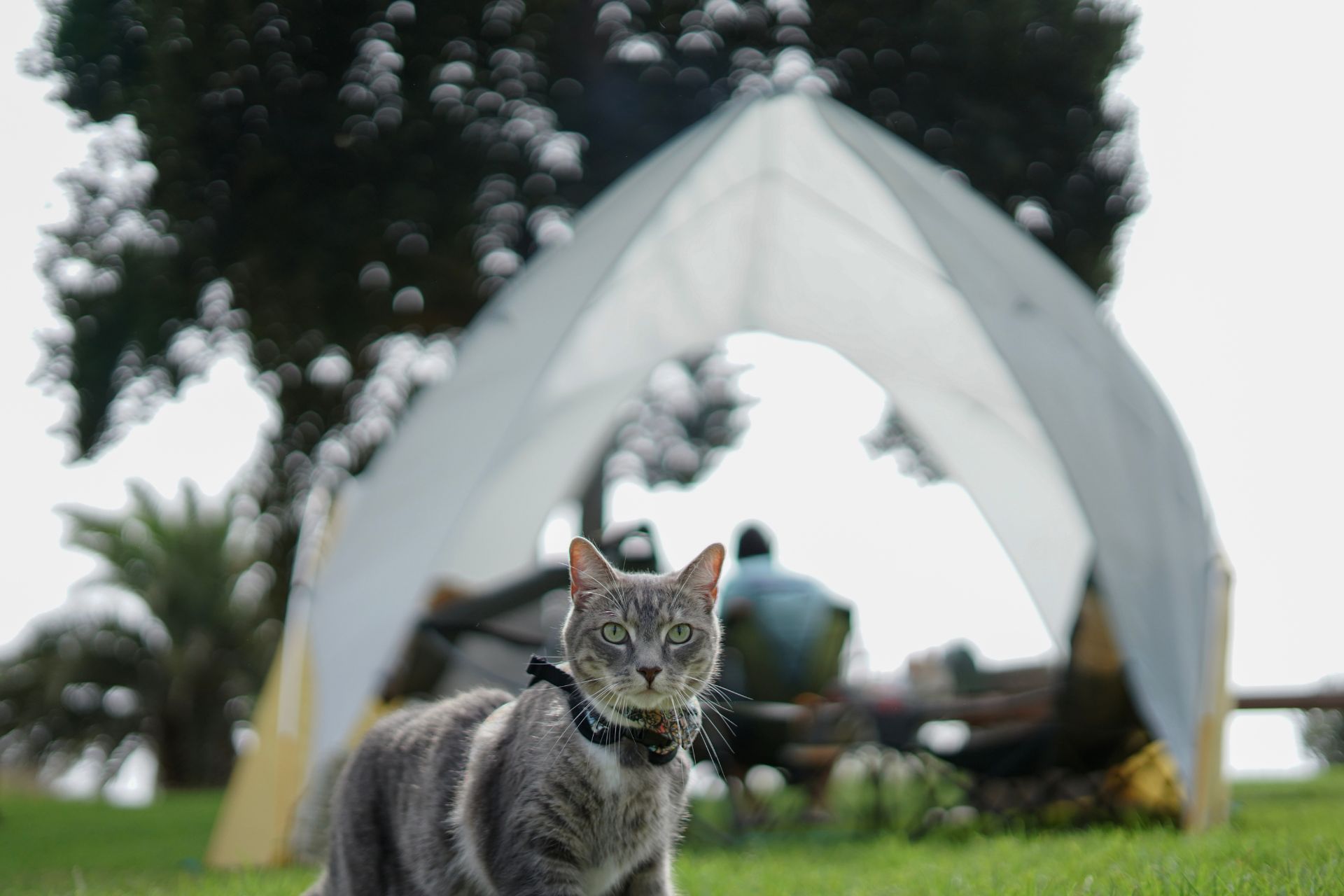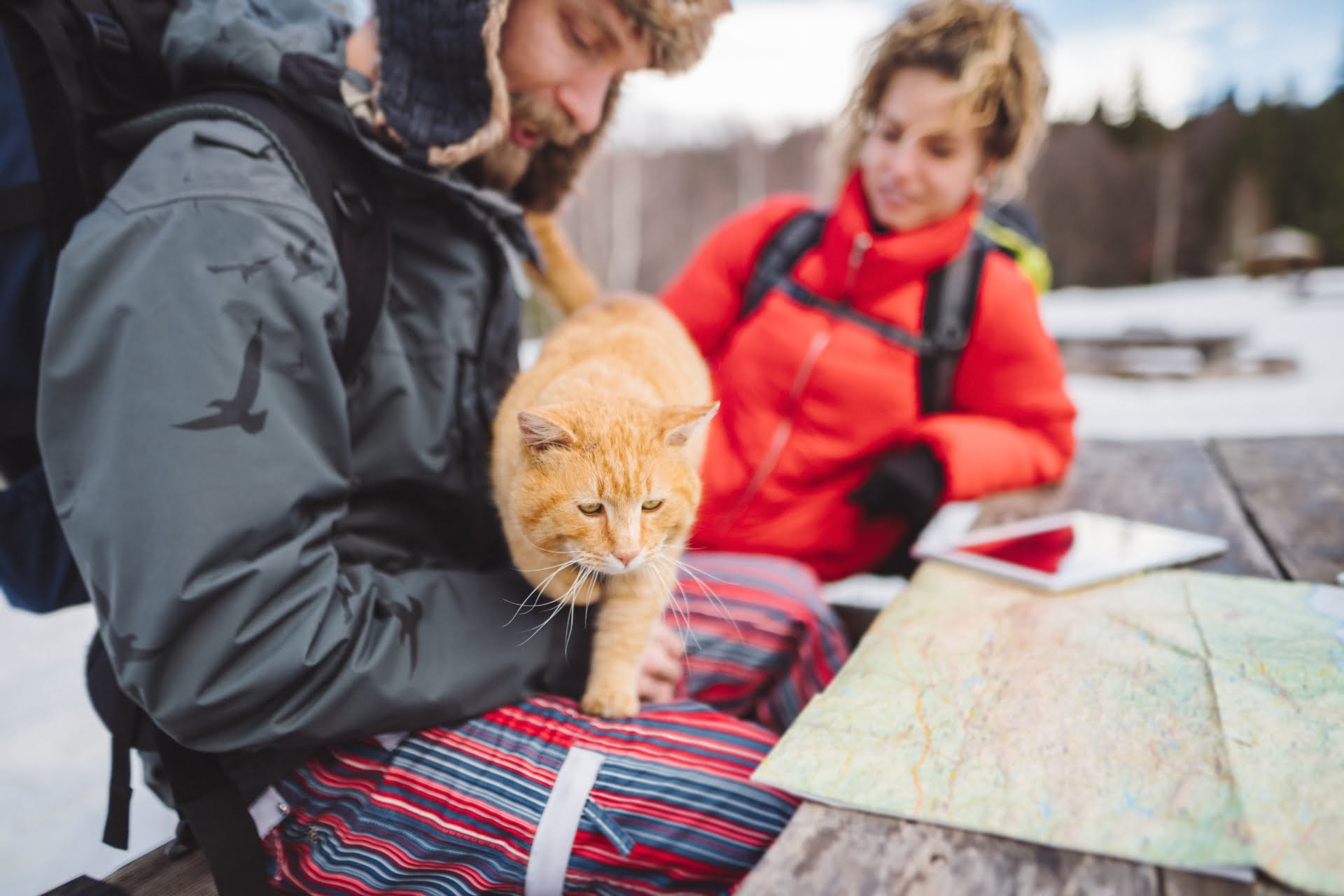Camping with a cat can be a wonderful adventure filled with companionship, exploration, and shared experiences. By preparing adequately, prioritizing safety, and considering your cat’s needs, you can create a positive and enjoyable camping experience for both you and your feline friend. So, pack your camping gear, leash up your cat, and embark on a memorable outdoor journey together. This article will guide you through the process of camping with a cat, from preparation to safety measures, and provide tips for a successful trip.
Contents
- Benefits of Camping with a Cat
- Preparing for Camping with a Cat
- Choosing the Right Camping Destination
- Precautions and Safety Measures
- Setting Up Camp with Your Cat
- Exploring the Outdoors with Your Cat
- Campfire Safety and Cat Etiquette
- Weather Considerations
- Tips for a Successful Camping Trip with a Cat
- Conclusion
- FAQs (Frequently Asked Questions)
Benefits of Camping with a Cat
Companionship and Emotional Support
Camping with your cat offers the companionship and emotional support that only a pet can provide. Cats are known for their independent nature, but they also form strong bonds with their human companions. Having your cat by your side during outdoor activities can provide comfort and alleviate feelings of loneliness or anxiety.
Safety and Security
Cats have keen senses and can serve as an extra set of eyes and ears in the wilderness. Their acute hearing and ability to detect subtle movements can alert you to potential dangers or wildlife encounters. Additionally, the presence of a cat may help deter unwanted wildlife from approaching your campsite.
Exploring Nature Together
Cats are naturally curious creatures, and camping provides a unique opportunity for them to explore the sights, sounds, and smells of nature. Watching your cat as they observe birds, chase insects, or climb trees can be a source of entertainment and delight. It allows them to engage their natural instincts while enjoying the great outdoors.
Preparing for Camping with a Cat
Before embarking on a camping trip with your cat, proper preparation is crucial to ensure their safety and well-being.
Veterinary Check-up and Vaccinations
Schedule a visit to your veterinarian to ensure your cat is in good health and up to date on vaccinations. Inform your vet about your camping plans, as they may recommend additional preventive measures based on the specific location and environment.
Cat-friendly Camping Gear
Invest in cat-friendly camping gear to make your cat’s outdoor experience comfortable. A sturdy and secure cat carrier or travel crate is essential for transportation. Additionally, consider getting a harness and leash designed specifically for cats, allowing them to explore safely while under your supervision.
Pack Essential Supplies
Pack a cat-specific camping kit that includes their regular food, treats, and fresh water. Carry collapsible bowls for feeding and provide a comfortable bed or sleeping pad for your cat. Don’t forget to bring their favorite toys to keep them entertained during downtime.
Choosing the Right Camping Destination
When selecting a camping destination, it’s important to consider your cat’s needs and safety.
Research Pet-Friendly Campgrounds
Look for pet-friendly campgrounds that allow cats. Research the rules and regulations of each campground, such as leash requirements and designated pet areas. Some campgrounds may also offer cat-specific amenities or services.
Consider Accessibility and Safety
Choose a campsite that is easily accessible and suitable for a cat. Look for flat terrain to prevent injuries or difficulties in movement. Ensure there are no hazards such as poisonous plants or steep cliffs that could pose a danger to your cat.
Check for Wildlife and Environmental Hazards
Research the local wildlife and potential environmental hazards in the camping area. Be aware of predators, such as coyotes or bears, and take necessary precautions to keep your cat safe. Familiarize yourself with plants that may be toxic to cats and avoid those areas.
Precautions and Safety Measures
Taking precautions and implementing safety measures will help ensure a safe and enjoyable camping experience for your cat.
Leashing and Supervision
Keep your cat on a leash at all times while outside the tent or RV. This will prevent them from wandering off, encountering wildlife, or getting lost. Supervise your cat closely and never leave them unattended.
Identification and Microchipping
Ensure your cat wears a collar with identification tags containing your contact information. Consider microchipping your cat as an additional precautionary measure. If your cat becomes lost, these identification methods will increase the chances of a safe return.
Protecting Against Fleas and Ticks
Apply a veterinarian-recommended flea and tick preventive treatment on your cat before the camping trip. Regularly check your cat for ticks during the trip, especially after walks in wooded areas. Bring a tick removal tool in case you need to remove a tick from your cat’s fur.
Carrying a Pet First Aid Kit
Pack a pet first aid kit that includes essential items such as bandages, antiseptic wipes, tweezers, and any necessary medications. Familiarize yourself with basic first aid techniques for cats, and be prepared to handle minor injuries or illnesses.
Setting Up Camp with Your Cat
Once you arrive at your campsite, it’s important to create a safe and comfortable environment for your cat.
Introducing Your Cat to the Campsite
Allow your cat to explore and familiarize themselves with the campsite at their own pace. Start by introducing them to the interior of the tent or RV, gradually allowing them to venture outside under your supervision.
Providing a Safe and Comfortable Space
Create a designated area within the campsite where your cat can relax and feel secure. Set up a cozy bed or blanket in a quiet corner of the tent or RV, providing a sense of familiarity. Consider using a pet gate or portable enclosure to prevent your cat from wandering off.
Creating a Litter Box Station
Set up a litter box station away from food and sleeping areas. Use a portable litter box that is easy to clean and maintain. Bring an ample supply of litter to ensure cleanliness throughout the trip.
Ensuring Food and Water Availability
Ensure your cat has access to fresh food and water at all times. Bring their regular cat food and avoid feeding them unfamiliar or potentially harmful human foods. Store food securely to prevent attracting wildlife.
Exploring the Outdoors with Your Cat
Camping provides numerous opportunities for outdoor activities and exploration with your cat.
Cat-Friendly Activities
Engage in cat-friendly activities that stimulate their senses and natural instincts. Bring interactive toys such as feather wands or laser pointers to encourage play. Allow them to chase leaves or insects, providing mental and physical stimulation.
Hiking and Walking Trails
Take your cat for short walks or hikes on cat-friendly trails. Ensure they are securely leashed and supervised at all times. Gradually increase the duration and difficulty of the walks based on your cat’s comfort level.
Wildlife Encounters
Observe wildlife from a safe distance and prevent your cat from approaching or chasing wild animals. Keep a watchful eye on your surroundings, especially if you’re in an area known for encounters with larger wildlife.
Campfire Safety and Cat Etiquette
When enjoying a campfire, it’s important to prioritize safety and considerate behavior.
Supervision around the Campfire
Keep a close eye on your cat when near the campfire. Cats are naturally curious and may be attracted to the flames or hot embers. Ensure they are at a safe distance and never leave them unattended.
Preventing Cat from Jumping into Flames
Use a pet barrier or create a physical barrier around the campfire to prevent your cat from jumping into the flames. Ensure they cannot access burning embers or hot surfaces.
Respecting Other Campers
Be mindful of other campers and their potential allergies or fear of cats. Keep your cat leashed and avoid allowing them to approach other campsites or interact with other campers without their consent.
Weather Considerations
Consider the weather conditions and make necessary arrangements to keep your cat comfortable and safe.
Protection from Extreme Temperatures
In hot weather, provide shade and a cool area for your cat to relax. Ensure they have access to fresh water at all times to prevent dehydration. In cold weather, provide warm bedding and consider using a heated pad or blanket.
Shelter and Shade
Set up a sheltered area where your cat can seek refuge from rain or intense sunlight. Use a portable cat tent or create a covered space within the campsite to provide protection from the elements.
Rainy Days and Wet Weather
Prepare for rainy days by having a waterproof shelter for your cat and keeping their bed or sleeping area dry. Bring towels or extra blankets to dry them off if they get wet. Monitor your cat closely for signs of discomfort or hypothermia during wet weather.
Tips for a Successful Camping Trip with a Cat
Consider these additional tips to ensure a successful camping experience with your cat:
Patience and Understanding
Be patient with your cat as they adjust to the camping environment. Understand that they may be initially anxious or cautious. Provide reassurance and positive reinforcement to help them feel more at ease.
Gradual Exposure to Camping Environment
Introduce your cat to camping gradually. Start with short trips or backyard camping to acclimate them to outdoor sights and sounds. Gradually increase the duration and complexity of the trips as your cat becomes more comfortable.
Maintaining a Routine
Stick to your cat’s regular feeding, playtime, and sleep schedule as much as possible. Maintaining a familiar routine will help reduce stress and provide a sense of stability for your cat.
Enjoying the Experience Together
Remember to enjoy the experience together and create lasting memories. Observe your cat’s reactions to new experiences and take pleasure in witnessing their enjoyment of the natural environment.
Conclusion
Camping with a cat can be a rewarding and memorable experience for both you and your feline friend. As an outdoor enthusiast and a cat lover, taking your cat along on camping adventures allows you to share the joys of nature while strengthening your bond.
FAQs (Frequently Asked Questions)
Q1: Is it safe to camp with a cat? A: Camping with a cat can be safe if proper precautions are taken. Keep your cat leashed, provide a secure environment, and be aware of potential hazards.
Q2: Can I let my cat roam freely at the campsite? A: It is not recommended to let your cat roam freely at the campsite. Keep them leashed and supervised to prevent them from getting lost or encountering wildlife.
Q3: How can I protect my cat from fleas and ticks while camping? A: Use a veterinarian-recommended flea and tick preventive treatment before the camping trip. Regularly check for ticks and carry a tick removal tool.
Q4: Should I bring my cat’s regular food or switch to camping-specific food? A: It’s best to bring your cat’s regular food to maintain their diet and prevent digestive issues. Stick to familiar and safe options.
Q5: Can I take my cat camping if they are afraid of new environments? A: If your cat is afraid of new environments, it may require more time and patience to acclimate them. Start with short trips and gradually increase the duration as they become more comfortable.
Q6: Can I camp with a dog as well? A: Absolutely! Dogs make awesome camping companions as well. Learn more about camping with a dog in our article Camping with a Dog: All You Need to Know.












